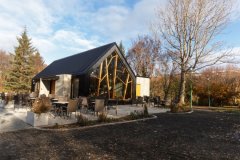Thailand's coffee industry structure should rectify the foreign coffee industry.
In recent years, coffee producing countries no longer blindly pursue high output while neglecting quality. Many countries have begun to introduce a new coffee evaluation system in order to arouse the enthusiasm of producers and promote the production of fine coffee. For example, Brazil began to implement the Cup of excellence coffee rating system in 1999 in order to better subdivide boutique coffee. And boutique coffee has become one of the fastest growing markets in the catering service industry, reaching 12.5 billion US dollars in the United States alone in 2007. All these can see the potential of the boutique coffee market, and the boutique coffee market will certainly grow stronger and stronger in the future.
Anan, Deputy Director of the Department of Agricultural Technology Promotion, Ministry of Agricultural Cooperation of Thailand. Referring to the comprehensive adjustment of the coffee industry structure, Lila said that the adjustment plan will be implemented in Chunpeng Prefecture and Lalang Prefecture, selecting the Mid-levels Garden production team in Savi County, Chunpeng Prefecture, and the Coffee planting Cooperative in Daihe County, Chunpeng Prefecture, and the garden production team in Kravuli County, Lalang Prefecture. Because these three teams have the ability to process and produce coffee and have obtained the first-class certification in the market, they have jointly helped to increase production. Reduce production costs, including processing the means of production of coffee, increase the commodity value of coffee, and improve the impact resistance of agricultural institutions, including creating a new way to reduce the impact of opening up the ASEAN free trade area market on the industry. It is expected that after the end of the adjustment plan, the yield per unit area will increase from 200 kg / L to 250 kg / L, and other crops mixed with coffee will be increased. The output will also increase from 140 kg / L to 180 kg / L.
Coffee is one of the most important cash crops in Thailand, and most of it is planted in the south, such as Chunpong, Lalang, Suratani, Krabi and Luokun, which is conducive to growing Robusta coffee. According to some survey data in 2008, there are 29432 farmers growing coffee in Thailand, with an average output of 130kg per kilogram and an average production cost of 39.06baht per kilogram. As a result, it is impossible to compete with imported coffee in price, so most Thais are reluctant to consume home-grown coffee.
Therefore, the Division of Agricultural Technology Promotion plans to comprehensively restructure the coffee industry, committed to increasing production, reducing production costs and improving the quality of coffee produced, including by increasing the commercial value of coffee, this is achieved through the promotion of coffee processing and coffee products in agricultural institutions and the promotion of coffee trade. Chunpong and Lalang were chosen as the target because these two areas had the largest output and the planting area was 80% of the total planting area of coffee in Thailand.
(the article comes from Sina blog)

Important Notice :
前街咖啡 FrontStreet Coffee has moved to new addredd:
FrontStreet Coffee Address: 315,Donghua East Road,GuangZhou
Tel:020 38364473
- Prev

Coffee anecdotes of Robot Cafe, which has been in operation for only three days.
Hartye, director of the project, said: in order to adapt to the special environment of indoor work, Blue Jay is equipped with multiple sensor devices such as optical radar and indoor positioning system. Basically does not use the GPS positioning system commonly used by drones, after all, it often fails indoors. A drone similar to Blue Jay costs about 2000 euros, but it is unmanned at the University of the Netherlands.
- Next

Coffee shop daily do you know the routine of opening a coffee shop
Boutique coffee has a rich and beautiful taste. Even if the coffee made of boutique coffee beans is not all fine coffee, it depends on whether it gives full play to the characteristics of coffee beans, whether it has a good taste, if not, it can not be called boutique coffee. Open the process 1, 15 minutes in advance, tidy up the grooming, change clothes and take up the post. 2. Open the bar area
Related
- A complete list of coffee bean names and their meanings! What is Yejia Shefi coffee? Where is Mantelin coffee?
- What grade does Arida Manor Kaduai coffee beans belong to? What treatment is Arida ASD slow anaerobic sun exposure?
- The milk tea cup becomes smaller?! Overlord Tea Girl launches a new "Return to Yunnan" series
- Accused of selling counterfeit and high-priced coffee beans! Well-known boutique coffee brand "Oukelao" bowed and apologized!
- How to make espresso dumplings? Can I eat coffee and glutinous rice balls together?
- Save the unformed and stagnant powder cakes in one second! What is the problem with stagnant water in the powder bowl of the espresso machine?
- What does hand-brewed coffee stop mean? Why is it not recommended to make coffee by hand?
- Is it normal to smell like coffee? Why does coffee smell like alcohol? What's wrong with the strong smell of cold extract ice dripping ice brewed coffee?
- How to solve the problem that hand-brewed coffee extraction takes too long? Why is the water flowing so slowly when making coffee?
- The main points of making Australian white coffee, the proportion details, how does Australian white properly foam and blend the flowers?

